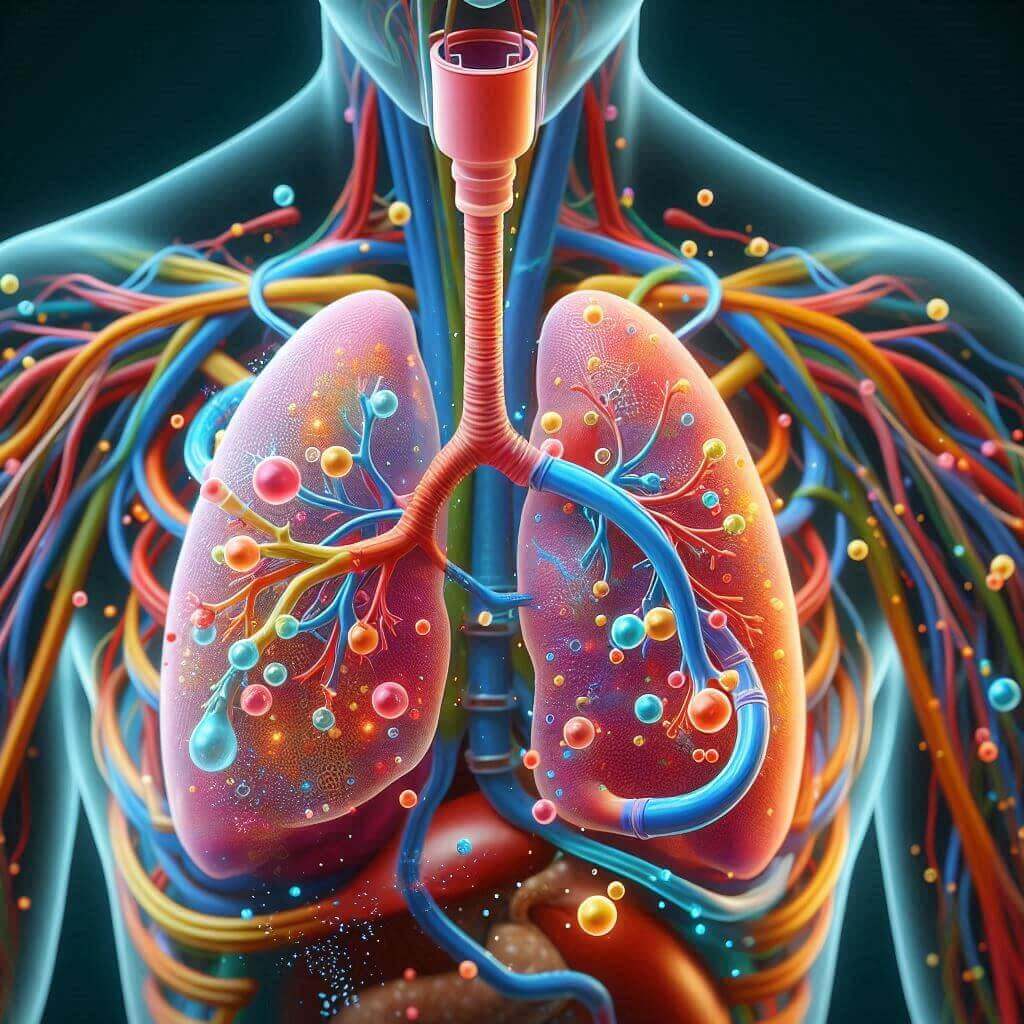Table of Contents
Have you ever paused to think about how your respiratory system keeps you alive every second?
Every breath tells a quiet story: air flowing in, lungs expanding, and life continuing—often unnoticed.
Let’s explore this incredible system in simple, relatable language to truly appreciate what happens with every inhale and exhale.
Why Breathing Is More Amazing Than You Realised
Your respiratory system isn’t just about taking in air—it’s at the heart of everything you do:
- Oxygen delivery: Fuels your brain, heart, and muscles.
- Carbon dioxide removal: Keeps your blood balanced.
- Protection: Filters out germs and dust.
- Sound production: Lets you laugh, speak, and sing.
Behind each breath is a complex process that happens automatically—even while you sleep.
Meet the Main Parts of the Respiratory System
Let’s break it down:
Upper airways:
- Nose & nasal cavity: Filters, warms, and moistens air.
- Pharynx: Pathway shared by food and air.
- Larynx (voice box): Helps produce sound and protects your airway.
Lower airways:
- Trachea: Directs air to the lungs.
- Bronchi & bronchioles: Branch deeper into the lungs.
- Alveoli: Tiny sacs where gas exchange truly happens.
These parts all work together to keep your body oxygenated and healthy.
How Lungs Breathe Life Into Your Body
Imagine your lungs as soft, spongy balloons. Here’s what happens each time you breathe:
- The diaphragm contracts and pulls down.
- Air rushes in through the airways.
- Oxygen passes into the blood at the alveoli.
- Carbon dioxide moves from the blood to the alveoli to be exhaled.
This process happens roughly 20,000 times each day—without you having to think about it.
Defenders Inside Your Lungs
Your respiratory system has built-in protection:
- Cilia: Microscopic hairs that sweep away debris.
- Mucus: Traps dust and bacteria.
- Reflexes: Sneezing and coughing clear irritants quickly.
Together, these defenses keep harmful particles out so you can breathe freely.
Breathing Changes with Your Needs
Your breathing rate isn’t always the same:
- Exercise: Muscles demand more oxygen, so breathing speeds up.
- Stress or fear: Can trigger shallow, faster breaths.
- Sleep: Breathing slows and deepens.
It’s all automatic, thanks to signals from your brain to your respiratory system.
How to Keep Your Respiratory System Strong
Healthy lungs are worth the effort. Here’s how to take care of them:
✅ Don’t smoke: Protects lung tissue and keeps airways clear.
✅ Stay active: Exercise keeps lungs elastic and strong.
✅ Avoid pollutants: Masks or staying indoors on high pollution days help.
✅ Practice deep breathing: Increases lung capacity.
✅ Hydrate: Keeps mucus thin, making it easier to clear.
Good habits protect your respiratory health long-term.
Common Respiratory Issues to Know
Even healthy lungs can face challenges:
- Asthma: Airways narrow, making breathing tough.
- Bronchitis: Inflammation of the bronchi.
- Pneumonia: Infection filling alveoli with fluid.
- COPD: Chronic blockage that makes breathing out hard.
- Allergies: Trigger coughing and sneezing.
Knowing symptoms early can help protect your lung health.
Surprising Facts About the Lungs
Learning can be fun, too:
- Lungs together can hold up to 6 liters of air.
- The alveoli, if stretched out, would cover the size of a tennis court.
- You breathe about 12–20 times per minute at rest.
Your respiratory system is quietly incredible every moment of your life.
Study Tips to Learn Faster
If you’re studying anatomy, try these:
- Flashcards: Quick recall of terms.
- Diagrams: Visualize how air moves.
- Apps & videos: See real-life examples and animations.
- Group study: Explain concepts to each other.
Learning becomes easier when you mix reading, visuals, and active practice.
Personal Reflection: Why I Value My Respiratory System
As a nurse, I’ve seen what happens when someone can’t catch their breath. Watching patients struggle made me realize how precious healthy lungs really are.
Every clear breath is a quiet victory—and every cough or gasp is a reminder to care for our bodies.
The Big Picture
Your respiratory system is:
- Constantly working, day and night.
- Adapting to stress, movement, and rest.
- Protecting you from germs and dust.
- Keeping your blood balanced and your cells alive.
It asks nothing from you, except care and respect.
Quick Recap: Key Points
- The system includes upper airways, lower airways, and alveoli.
- Lungs exchange gases to fuel your body.
- Protective mechanisms keep harmful particles out.
- Breathing rate adjusts automatically.
- Good habits and early care keep your lungs healthy.
Each breath is your body’s quiet promise to keep you alive.
Final Thoughts
Learning about your respiratory system isn’t just about memorizing facts—it’s about understanding how every breath keeps you moving, talking, and living.
Every breath matters—so keep learning, and keep breathing easy.
Resources that might be helpful
From my Blog:
Suggested Resources:
Join our Email List Today!
We’d love to stay in touch and keep you updated with the latest insights and resources!
- Stay informed with exclusive content and updates.
- Receive expert tips and valuable resources directly in your inbox.
- Be the first to know about new articles, events, and more!
Fill out the form to subscribe now and be part of our growing community!
Let’s keep the learning and excitement going!
Subscribe to my YOUTUBE Channel
If this post resonated with you, I also share calming visuals, quiet moments, and reflections on wellness over on my YouTube channel. You’re welcome to subscribe and join me there, whenever it feels right. Subscribe here
